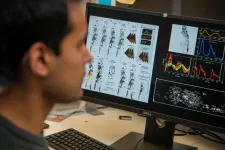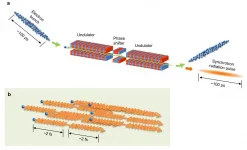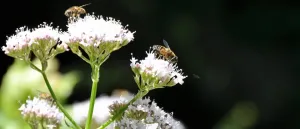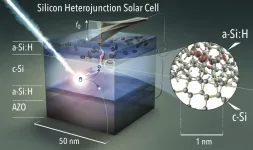Cellular benefits of gene therapy seen decades after treatment
2021-03-17
(Press-News.org) An international collaboration between Great Ormond Street Hospital, the UCL GOS Institute for Child Health and Harvard Medical School has shown that the beneficial effects of gene therapy can be seen decades after the transplanted blood stem cells has been cleared by the body.
The research team monitored five patients who were successfully cured of SCID-X1 using gene therapy at GOSH. For 3-18 years patients' blood was regularly analysed to detect which cell types and biomarker chemicals were present in their blood. The results showed that even though the stem cells transplanted as part of gene therapy had been cleared by the patients, the all-important corrected immune cells, called T-cells, were still forming.
Gene therapy works by first removing some of the patients' blood-forming stem cells, which create all types of blood and immune cells. Next, a viral vector is used to deliver a new copy of the faulty gene into the DNA of the patients' cells in a laboratory. These corrected stem cells are then returned to patients in a so-called 'autologous transplant', where they go on to produce a continual supply of healthy immune cells capable of fighting infection.
In the gene therapy for SCID-X1 the corrected stem cells have been eventually cleared by the body but the patients remained cured of their condition. This team of researchers suggested that the 'cure' was down to the fact that the body was still able to continually produce newly-engineered T cells - an important part of the body's immune system.
They used state-of-the-art gene tracking technology and numerous tests to give unprecedented details of the T cells in SCID-X1 patients decades after gene therapy.
The team believe that this gene therapy has created the ideal conditions for the human thymus (the part of the body where T cells develop) to host a long-term store of the correct type of progenitor cells that can form new T cells. Further investigation of how this happens and how it can be exploited could be crucial for the development of next generation gene therapy and cancer immunotherapy approaches.
INFORMATION:
All research at Great Ormond Street Hospital Trust is underpinned by support from the NIHR GOSH Biomedical Research Centre.
The full research paper is available in Nature Communications from 12-03-21: https://doi.org/10.1038/s41467-021-21834-9
ELSE PRESS RELEASES FROM THIS DATE:
2021-03-17
In researching the causes and potential treatments for degenerative conditions such as Alzheimer's or Parkinson's disease, neuroscientists frequently struggle to accurately identify cells needed to understand brain activity that gives rise to behavior changes such as declining memory or impaired balance and tremors.
A multidisciplinary team of Georgia Institute of Technology neuroscience researchers, borrowing from existing tools such as graphical models, have uncovered a better way to identify cells and understand the mechanisms of the diseases, potentially leading to better understanding, diagnosis, and treatment.
Their research findings were reported Feb. 24 in the journal eLife. The research was supported by the National Institutes of ...
2021-03-17
Hydrogen is a pollution-free energy source when it's extracted from water using sunlight instead of fossil fuels. But current strategies for "splitting" or breaking apart water molecules with catalysts and light require the introduction of chemical additives to expedite the process. Now, researchers reporting in ACS ES&T Engineering have developed a catalyst that destroys medications and other compounds already present in wastewater to generate hydrogen fuel, getting rid of a contaminant while producing something useful.
Harnessing the sun's energy to split water to make hydrogen fuel is a promising renewable resource, but it is a slow process even when catalysts are used to speed it along. In some cases, alcohols or sugars are added to boost the rate of hydrogen production, ...
2021-03-17
NEW YORK (March 17, 2021) -- High speed air dryers not only leave more contamination on poorly washed hands compared to paper towels, but during hand drying, they can also spread germs onto clothing, ultimately transferring more bacteria to other surfaces, according to a study published today in Infection Control & Hospital Epidemiology, the journal of the Society for Healthcare Epidemiology of America.
Past research has shown recommended handwashing practices for healthcare workers are often not followed with average adherence of 40%. To better understand the impact of hand drying in hand hygiene, researchers conducted an experiment to learn the role of different hand drying methods in spreading germs from poorly washed hands beyond the restroom.
For ...
2021-03-17
Scientists in Japan have observed, and interfered with, the ultrafast motion of electron movement inside of a Xenon atom using the coherent pairs of short light waves in synchrotron radiation. Xenon, consisting of a nucleus surrounded by five nested shells containing a total of 54 electrons, is used in flash lamps, and it burns bright and fast. The luminescent electrons move there on a time scale of one billionth of a second. The fast electron movement is however six orders of magnitude slower than that the scientists observed. Using the synchrotron facility at Institute for Molecular Science, they tracked the electron movement in relaxation to shed energy by dropping from an outer shell to an inner shell. The process happens at a timescale of femtoseconds, ...
2021-03-17
Researchers at Lund University in Sweden have designed a new bioink which allows small human-sized airways to be 3D-bioprinted with the help of patient cells for the first time. The 3D-printed constructs are biocompatible and support new blood vessel growth into the transplanted material. This is an important first step towards 3D-printing organs. The new study has been published in Advanced Materials.
Chronic lung diseases are the third leading cause of death worldwide with an EU cost of more than €380 billion annually. For many chronic diseases ...
2021-03-17
The promotion of psychosocial health among individuals, groups, and society is an increasingly important subject in the field of public health. Psychosocial health is a complex interaction between the psyche of an individual and the social environment in which that individual lives. Promoting psychosocial health is often challenging and complex for health care professionals. Therefore, an important question of public health significance is: "how can we address and improve the psychosocial health of individuals, groups, as well as society in general?"
An interdisciplinary team of specialists ...
2021-03-17
The use of artificial light at night around the world has increased enormously in recent years, causing adverse effects on the survival and reproduction of nocturnal organisms. Artificial light at night interferes with vital ecological processes such as the nighttime pollination of plants by nocturnal insects, which could have consequences for agricultural crop yields and reproduction of wild plants.
Scientists from the University of Zurich and Agroscope have now demonstrated for the first time that artificial light at night also adversely affects insects' pollination behavior during the daytime. In an experiment, they used commercial ...
2021-03-17
Silicon solar cells are now so cheap and efficient that they can generate electricity at prices of less than 2 cent/kWh. The most efficient silicon solar cells today are made with less than 10 nanometres thin selective amorphous silicon (a-Si:H) contact layers, which are responsible for separating the light-generated charges . Efficiencies of over 24% are achieved at HZB with such silicon heterojunction solar cells and are also part of a tandem solar cell that lead to a recently reported efficiency record of 29.15 % (A. Al-Ashouri, et al. Science 370, (2020)). The current world record from Japan for a ...
2021-03-17
Tropical Cyclone (TC) is an intense atmospheric vortex with a warm core and low pressure structure, and generates over the tropical or subtropical warm ocean. The problem of TC genesis has been paid great attention by scientists since the 1950s, but due to the lack of the observation data over sea, this problem has become the most difficult and challenging topic in the researches of TC.
Cumulus convections are considered to be the most basic element in the TC generation process. The formation of TC in the Northwest Pacific is often associated with the mesoscale convective system (MCS) or mesoscale convective complex (MCC). Meanwhile, in the stratiform ...
2021-03-17
Not least because of the COVID-19 pandemic, conspiracy theories are more topical than ever. They are reported and discussed in almost all media and communication channels. But what influence do they have on our behavior? Scientists led by behavioral economist Loukas Balafoutas investigated this question in a recently published study. The result: We don't need to believe in conspiracy theories for them to have an impact on us. Merely being confronted with them suffices.
Previous studies have shown that beliefs in conspiracy theories have an influence on the behavior of their adherents. For example, they lead to lower voter turnout or a lower willingness to get vaccinated. For years now, conspiracy theories have been ...
LAST 30 PRESS RELEASES:
[Press-News.org] Cellular benefits of gene therapy seen decades after treatment




